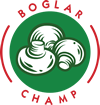Edible mushrooms have been consumed by mankind since ancient times. In prehistoric communities, a lifestyle based on fishing, hunting, and gathering also included knowledge of mushrooms: prehistoric people observed what mushroom animals ate and initially ate them raw or dried. However, several mushrooms are poisonous or can only be eaten if cooked or fried. Some species of mushrooms can be eaten by certain animals but cause poisoning in humans. Even the deadly death cap can be eaten by animals: snails are immune to its toxin which is a poison that causes irreversible damage and death to warm-blooded animals and humans.
Therefore, the rule of thumb is this: if you’re not certain what species the mushroom found in the wild belongs to and you’re unsure if it’s edible, don’t pick it. It’s enough if you take a photo and then you can identify it with the help of a mushroom picker’s guide or a mushroom specialist.
Safety first!
If you still picked mushrooms but have doubts about identification, put them in a separate basket or box and, as you get home, have them examined by an expert.
When you go mushroom picking, you should do so in a professional way that allows inspection after harvesting: carefully separate the mushroom body from the soil and avoid damaging the stem or volva. Cover the area where you collected the mushrooms with dry leaves to prevent the healthy mycelium that remains uncovered from drying out.
Always use a basket and never a plastic bag to collect wild mushrooms. The sporocarp will not get enough air in the plastic bag, making them spoil, break down, and become unrecognizable.
Do not pick very young or old mushrooms, damaged with worms, as they cannot be eaten anyway.
Only pick as many edible mushrooms as you can consume in one sitting as a family. The aim of mushroom picking should be to go on a hike and to get to know nature: carry a camera, possibly a mushroom identification guide, so you can get to know the unknown species by leaving them in their natural habitat. If you come across poisonous mushrooms, don’t step on them or kick them because they are vital to the ecosystem!
If you only know one mushroom, it should be the death cap. Lethal mushroom poisoning is largely caused by this species. If you even suspect that the mushroom in question is the death cap, don’t pick it! If you have touched it, however, wash your hands. Even a small piece of this mushroom contains a lethal amount of poison.
Process harvested, controlled, edible wild mushrooms at home as soon as possible instead of storing them for days.
If you have prepared the examined wild mushrooms after collection and still notice signs of poisoning (nausea, diarrhea, vomiting) after consumption, seek medical help immediately!
When preparing wild mushroom dishes, mushrooms should be chopped finely and chewed thoroughly in the mouth. Do not eat large quantities and don’t serve mushrooms to young children or people with sensitive stomachs.
Curiosities about mushrooms in general
Fungi are neither plants nor animals: they are a separate kingdom of the living world. Scientists estimate that there are between 2.2 and 3.8 million species of fungi on Earth, but we only know about 148 000 of them. The species we are familiar with as fungi belong to the Ascomycota and Basidiomycota families: they have relatively large sporocarps of widely varying shapes and colors. According to current taxonomy, there are seven families in the fungal world, with Ascomycota and Basidiomycota fungi being the most common, including fungi eaten as food, yeast fungi, but also the most common parasitic pathogens, and even molds that cause food and wood decay.
You can find more fungi trivia in our Mushroom School series, for example, about the mushroom that breaks down asphalt or what wild mushrooms can be confused with.
Mushrooms and oyster mushrooms grown by Boglar Champ are perfectly safe to eat. Right from the start, we focus on producing mushrooms without chemicals: we disinfect the growing rooms with steam, thus protecting the mushrooms from disease. These two species are the most widely cultivated in the world. If you’re not familiar with wild edible mushrooms, buy them from the shop instead of picking them in the forest! You can find our products in every corner of the country, and if you’re looking for delicious mushroom recipes, feel free to browse our collection.






